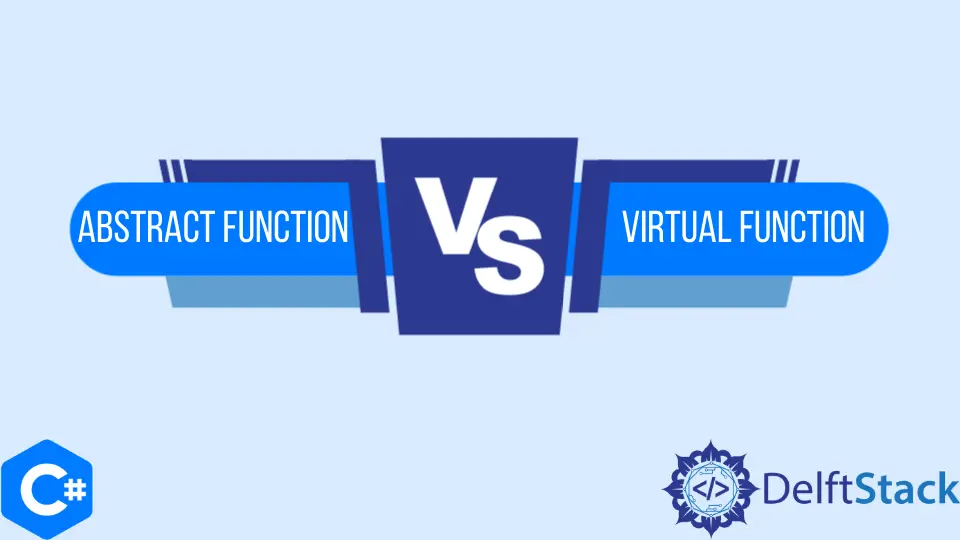Abstract Function vs Virtual Function in C#

This tutorial will compare the abstract function and virtual function in C#.
Abstract Function in C#
An abstract function has no definition of itself in C#. It means that each child class has to override the abstract function and provide its own definition of the abstract function. An abstract function can only be declared inside an abstract class. The abstract keyword is used to create abstract classes and functions in C#. The following code example shows us how to create an abstract function with the abstract keyword in C#.
using System;
namespace abstract_vs_virtual {
public abstract class parentClass {
public abstract void name();
}
class Program : parentClass {
public override void name() {
Console.WriteLine("This is Child Class");
}
static void Main(string[] args) {
Program p = new Program();
p.name();
}
}
}
Output:
This is Child Class
We created an abstract class parentClass and declared an abstract function name inside the parentClass class. We inherited the Program class from the parentClass and override the name() function. In the main function, we initialize an instance of the Program class and call the name() function.
Virtual Function in C#
A virtual function has its own definition, but it also allows the child classes to override it and have their own definition of the same function. The virtual keyword is used to specify that a function is a virtual function in C#. The following code example shows us how we can create a virtual function in C#.
using System;
namespace abstract_vs_virtual {
public class parentClass {
public virtual void name() {
Console.WriteLine("This is the Parent Class");
}
}
class Program : parentClass {
static void Main(string[] args) {
Program p = new Program();
p.name();
parentClass pc = new parentClass();
pc.name();
}
}
}
Output:
This is the Parent Class
This is the Parent Class
In the above code, we created a class parentClass and defined a virtual function name() inside the parentClass class. We then inherited the Program class from the parentClass and did not override the name() function inside the Program class. In the main function, we created instances of both Program class and the parentClass and called the name() function with both instances. The function call p.name() gave us the output This is the Parent Class because there is no definition of the name() function inside the Program class.
Maisam is a highly skilled and motivated Data Scientist. He has over 4 years of experience with Python programming language. He loves solving complex problems and sharing his results on the internet.
LinkedIn